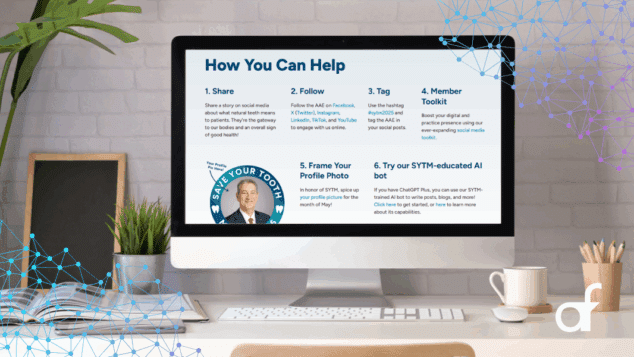Data-driven Decisions: Creating Connections from New Vantage Points

I recently changed jobs after spending 13 years at my previous position. During that time, I had developed a solid understanding of my work and audience, much like a view from a window. However, the view was fixed. I couldn’t change the building’s location, the floor’s position, or the angle from the window, and I couldn’t remove any obstructions blocking my view.
Upon switching jobs, my vantage point changed. The things that were once getting in my way, such as that building blocking my view of Lake Michigan, were no longer an issue.
As a marketer, you must find ways to get closer to the nuances of how people are interacting with your association. Is your view close enough? If not, consider the following steps:
- Change your view: Alter your perspective and ask yourself deeper questions about your decisions.
- Remain curious and explore: Avoid creating a hierarchy between old and new knowledge. By deconstructing your narrative, you might find a whole new range of ideas that differ from what you previously observed.
- Remember to remain a novice: Continue to learn, as it allows you to infuse curiosity into everything you do. This will help you establish stronger connections between your ideas and your audience. Remember the saying, “You don’t know what you don’t know,” and remain curious about what you are doing and why you are doing it.
- Dive deeper into the data: Data-driven decision-making is a great way to gain competitive advantage, increase connection points (and profits), and reduce costs (and rework). Instead of relying on subjective strategies, data-driven decision-making (DDDM) employs historical information to analyze trends and inform future decisions based on what’s worked in the past, rather than gut feelings, opinion or experience. Companies that embrace DDDM position data at the core of every decision.
To initiate data-driven decision-making, follow this 5-step process:
Whatever your decision, whether it’s creating a new recruitment or retention plan or deciding between an in-person, virtual, or hybrid meaning, start with a close look at your objectives.
- Define your goals: Write them out to ensure they are measurable and will require data to support the decision-making process.
- Gather relevant data: Find and present data from various sources, including website analytics, CRM software, social listening tools, and member/customer feedback.
- Draw conclusions from the data: Compare current data with historical information to identify trends. Once identified, test hypotheses using A & B testing models on email tone, delivery times, and open rates.
- Plan your strategy: Outline specific goals, tasks, responsible parties, timelines, and the reasoning behind each decision. Clearly define expected outcomes.
- Measure success and repeat: Evaluate the data you collected and based your initial decision on and compare it with the current data based on your strategy. If the decision and plan produced growth, congratulations! If not, consider it a learning opportunity and gain insights into what doesn’t work. As Thomas Edison once said about inventing the light bulb, “I haven’t failed; I’ve just found 10,000 ways that didn’t work.”
Data-driven decision-making can be applied to various business areas:
- Finance: What’s the most cost-effective way to hire new staff or promote a new product?
- Growth: What activities can be done to prevent churn? How do you improve customer loyalty?Are the new planned features likely to impact your business goals?
- Marketing and sales: Which advertising channel gets the best ROI? Which sales activities generate the most leads?
- Customer service: What’s the most cost-effective way to handle support tickets? Which channels improve response times?
Member data-driven decision-making is essential for your association’s success. We use data to make decisions in our business. And our business depends on us making good decisions.
Tags
Related Articles
Turning AI Into Member Value
How AAE’s Save Your Tooth Month GPT became a personalized marketing assistant for members
The Power of Taking the AI Journey Together
Forum’s first Microsoft Copilot Lab brought together 20 professionals to explore how smart adoption of...
Content governance: Setting up your content for success
Why and how to create smart, sustainable systems and processes for all the content your...





